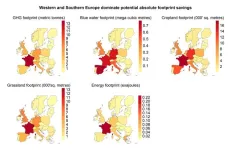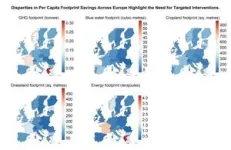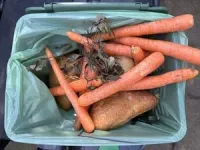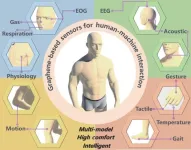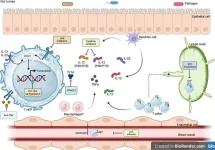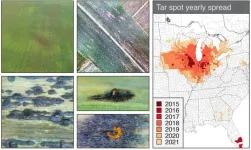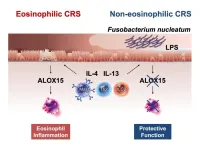(Press-News.org) New research shows that European food consumption draws unnecessarily excessively on global resources, which is why researchers are calling for political action. Many of the foods that are consumed in Europe are produced in countries outside Europe. Food loss – and waste later in the chain, (read more on waste terms below) – occurs along the food supply chain, from the primary agricultural sector in Europe or rest of the world, until it feeds mouths in Europe.
“Halving Europe’s food loss and waste, together with a redistribution of global food resources, could solve the challenges of food shortages in the world,” says Marianne Thomsen, research leader and professor of sustainable food systems at the Department of Food Science at the University of Copenhagen (UCPH FOOD).
This is why countries should invest in solutions to reduce food loss and waste at all stages of the food supply chain, believes Marianne Thomsen.
Gains from reducing food loss and waste
The researchers’ scenario calculations show what will happen if we halve the food loss and waste along the food supply chains associated with Europe’s food consumption. Halving food loss and waste in Europe’s food supply chains equates to saving 8 % of the greenhouse gas emissions caused by food consumption in Europe, along with an associated saving of 6 % of agricultural areas and 6 % of grazing areas – overall equalling 12 % of agricultural areas – as grazing areas are used for livestock. In addition, there is a saving of 7 % of water consumption, and 14 % of energy embodied in the food production for the citizens of Europe (see also the calculations below).
Marianne Thomsen points towards monitoring and reporting of food loss and waste by all actors along the food supply chain as an important policy instrument.
“Such a policy instrument may, supported by other types of policy instruments, be a strong incentive for companies and the rest of society to invest time and money in new technology and collaboration to prevent food loss and waste by closing the loop along the food supply chains within local circular food systems,” she says.
Marianne Thomsen also provides some examples of where food waste can be prevented:
“The companies can collaborate on sustainable innovation in circular symbioses where side streams are utilized for producing upcycled ingredients and products. As another example, the service industry can apply upcycled ingredients produced from surplus food in the wholesale sector, while at the same time nudge costumers to take smaller portions by reducing the plate size,” she explains.
A new angle on Europe’s footprint
National greenhouse gas emission inventories are based on the amount of greenhouse gases emitted by individual countries from the food production that occurs within their own geographical borders. The new calculations apply a consumption-based accounting approach. This includes the climate footprint from locally produced and imported food in European countries, while excluding domestically produced foods exported to other countries. In the scenario calculations, the researchers have assumed that the reduction in food loss and waste occurs through prevention, generating a reduction in food production and supply to satisfy European food consumption.
“Cutting food loss and waste caused by Europe’s food consumption by 50 % requires political intervention, and also that policy interventions are adapted to national circumstances and specific regional and local challenges,” says Marianne Thomsen.
The calculations show that there are large regional differences determining the most effective intervention type. That said, Western Europeans show the greatest potential footprint savings, especially France, Germany, Belgium, and the Netherlands. But also, countries with a lower gross domestic product, such as Greece, Croatia, Bulgaria, and Romania have great potential for food waste prevention. The agricultural sector shows the greatest potential for reducing the climate footprint, while the greatest potential for saving energy is found in the service industry, which includes canteens, hotels, and restaurants.
Waste Terminology
In an international context, “food loss” occurs from the primary agricultural sector to the food processing industry and the wholesale sector, while from the retail sector towards the service industry and households, we refer to “food waste”.
The calculations
The calculations are based on world food production and trade in 2018. By reducing the food loss and waste resulting from European food consumption by 50 %, the following consumption-based footprint savings can be achieved:
51 million tonnes CO2 equivalents (8%)
106,446 km2 agricultural land use (6 %)
55,523 km2 use of grazing land (6 %)
4.6 billion m3 water savings (7 %)
131 terawatt-hours (0.47 exajoules) energy savings (14 %)
The scientific article
Potential Energy and Environmental Footprint Savings from Reducing Food Loss and Waste in Europe: A Scenario-Based Multiregional Input–Output Analysis
The article is published in Environmental Science & Technology.
DOI: 10.1021/acs.est.3c00158
Authors:
Marianne Thomsen, Professor of Sustainability Assessment – Sustainable Food Processing and Production at the Department of Food Science at the University of Copenhagen (UCPH FOOD) (research leader). Marianne Thomsen is affiliated with Green Solutions Center, Fighting food waste Thematic Solutions – University of Copenhagen.
Albert Kwame Osei-Owusu, Postdoc at the Department of Sustainability and Planning, Aalborg University.
Quentin D. Read, Statistician at the U.S. Department of Agriculture’s Agricultural Research Service (ARS)
The research study is co-financed by the EU project FOODRUS, which aims to prevent food loss and waste in Europe and identify and implement innovative circular solutions for resilient food systems.
The research study applies multi-regional input-output modelling to estimate the potential footprint savings that result from reducing current FLW levels in Europe by 50%. The baseline, for calculating the impact of food loss and waste prevention, is the world food production and trade in 2018, pre-COVID-19.
END
Food waste prevention in Europe can generate major footprint savings
Researchers have estimated the climate footprint savings that may be obtained from reducing food loss and waste along Europe’s food supply chain by 50 % by 2030
2023-11-06
ELSE PRESS RELEASES FROM THIS DATE:
NIH grant expands UIC brain bank into citywide effort to study epilepsy, brain cancer
2023-11-06
A new virtual brain bank spanning five Chicago academic medical centers and led by University of Illinois Chicago will create a powerful new resource for clinical care and research on epilepsy, brain tumors and neurological disorders.
A $5 million grant from the National Institutes of Health will create a network of brain tissue research at UIC, Northwestern University, Lurie Children’s Hospital, Rush University and University of Chicago. The institutions will utilize a data platform developed at UIC called INTUITION that combines tissue data with clinical, functional, genetic and 3D imaging information to assist clinicians treating patients and help researchers better understand ...
Carbon-based sensors are poised to facilitate a seamless human-machine interface
2023-11-06
Interaction between machines and humans is paramount to the development of the new technologies of the metaverse, which are designed to augment the human experience through cloud computing and extended reality (XR). Graphene, a two-dimensional carbon material, has emerged as an ideal candidate for wearable sensor technology, paving the way for a new era of seamless human-machine interaction (HMI).
A team of material scientists led by Tian-Ling Ren from Tsinghua University in Beijing, China recently outlined the state of graphene-based HMI sensor technology ...
Chronic liver diseases: What new insights are there?
2023-11-06
Fatty liver diseases (FLD) have become a significant health concern worldwide, affecting millions. The two most common types of FLD are non-alcoholic fatty liver disease (NAFLD) and alcoholic-associated liver disease (ALD). NAFLD is associated with obesity, insulin resistance, and metabolic syndrome, while ALD is caused by excessive alcohol consumption. Both NAFLD and ALD can progress to liver fibrosis, cirrhosis, and, ultimately, hepatocellular carcinoma (HCC), a primary liver cancer with a poor prognosis.
Significant ...
Future therapies for managing inflammatory bowel disease
2023-11-06
Ulcerative colitis (UC) and Crohn's disease (CD) are chronic inflammatory bowel diseases (IBD) that affect the gastrointestinal tract. In recent decades, there have been significant advances in the understanding of IBD pathophysiology and the development of new treatments.
The International Organisation for the Study of Inflammatory Bowel Diseases (IOIBD) developed the Selecting Therapeutic Targets in Inflammatory Bowel Disease (STRIDE) programs, which recommend specific treatment goals for UC and CD in children ...
A joint research team from South Korea and the United States has identified a new gene classification system for gastric cancer
2023-11-06
- A multicenter study of the MD Anderson, Korea University, Yonsei University, and other institutions
- Establishing subtypes of gastric cancer classification to lay the foundation of personalized treatment
Professor Sang Cheul Oh of the Division of Oncology/Hematology, Department of Internal Medicine, Korea University College of Medicine, Professor Sang‑Hee Kang of the Department of Surgery, Korea University’s Guro Hospital, and Professor Sun Young Yim of the Division of Gastroenterology and Hepatology, Department of Internal Medicine, Korea University College of Medicine announced a new genetic classification system ...
MD Anderson Research Highlights: SITC 2023 Special Edition
2023-11-06
ABSTRACTS: 1534, 777, 1328, 1526, 1330, 545
HOUSTON ― The University of Texas MD Anderson Cancer Center’s Research Highlights provides a glimpse into recent basic, translational, and clinical cancer research from MD Anderson experts.
This special edition features oral presentations from the Society for Immunotherapy of Cancer (SITC) 38th Annual Meeting focused on scientific advances and breakthroughs in cancer immunotherapy from MD Anderson-led studies. Highlights include fecal microbiome transplants ...
Fossils tell tale of last primate to inhabit North America before humans
2023-11-06
LAWRENCE — The story of Ekgmowechashala, the final primate to inhabit North America before Homo sapiens or Clovis people, reads like a spaghetti western: A grizzled and mysterious loner, against the odds, ekes out an existence on the American Plains.
Except this tale unfolded about 30 million years ago, just after the Eocene-Oligocene transition during which North America saw great cooling and drying, making the continent less hospitable to warmth-loving primates.
Today, paleontologists from the University ...
It’s corn! It has the…spots? Researchers supply significant genomic insight into tar spot of corn
2023-11-06
First reported in 2015, tar spot is an emerging disease on corn that has rapidly spread across the United States and Canada, causing tremendous yield loss estimated at $1.2 billion in 2021 alone. Tar spot gets its name from its iconic symptoms that resemble the splatter of “tar” on corn leaves, but these spots are in fact brown lesions formed by the fungal pathogen Phyllachora maydis. This destructive pathogen is challenging to research because it cannot survive outside its plant host; therefore, little information is currently known about the mechanisms that contribute to its disease cycle including spore formation, reproduction, and plant ...
Incheon National University scientists develop new hydrogels for wound management
2023-11-06
Open wounds, whether caused by accidents or from medical procedures like surgery, require proper management to speed up healing and prevent infections. While sutures and staples are common wound closure methods, they can cause secondary tissue injuries, potentially leaking fluids and gases and requiring anesthetics. Tissue adhesive glues are a more attractive alternative but often suffer from toxicity and weak adhesion.
Fortunately, tissue adhesive patches offer an innovative solution. They allow precise control of adhesion and mechanical properties through adjustable polymeric compositions. These patches can also deliver ...
Nasal microorganism to the rescue? Study confirms protective role of bacterium in chronic rhinosinusitis
2023-11-06
Like other countries in the world, Japan has witnessed a worrisome increase in the prevalence of chronic rhinosinusitis (CRS) over the last decade. An inflammatory disease that lasts at least 12 weeks, CRS can cause nasal congestion, nasal discharge, trouble breathing through the nose, facial pain, and even loss of sense of smell. Unfortunately, treating CRS is complex since the disease manifests in various forms. CRS can be categorized into eosinophilic (ECRS) or non-eosinophilic (non-ECRS) types. In ECRS, the nasal and sinus tissues exhibit an increased presence of eosinophils, a type of white blood cell that releases inflammatory ...
LAST 30 PRESS RELEASES:
Implant provides lasting relief for treatment-resistant depression
Autologous T cell therapy targeting multiple antigens shows promise treating pancreatic cancer
First extensive study into marsupial gut microbiomes reveals new microbial species and antimicrobial resistance
Study debunks myth of native Hawaiians causing bird extinctions
Tailored biochar could transform how crops grow, resist disease, and clean polluted soils
Biochar-based enzyme technology offers new path for cleaner water and soil
Biochar helps farmland soils withstand extreme rain and drought by steadying carbon loss
New study reveals major gaps in global forest maps
Ochsner Health names Dr. Timothy Riddell executive vice president and chief operating officer
Can future-focused thoughts help smokers quit?
From brain scans to alloys: Teaching AI to make sense of complex research data
Stem Cell Reports seeks early career editors to join the editorial board
Signs of ancient life turn up in an unexpected place
Pennington Biomedical researchers explore factors behind body’s ability to regulate weight
Zhongping Lee awarded the Nils Gunnar Jerlov Medal
Deborah S. Kelley awarded the Wallace S. Broecker Medal
Novel immunotherapy demonstrates early potential to overcome resistance to immune checkpoint therapy
LLM treatment advice agrees with physician recommendations in early-stage HCC, but falls short in late stage
Deep learning model trained with stage II colorectal cancer whole slide images identifies features associated with risk of recurrence – with higher success rate than clinical prognostic parameters
Aboard the International Space Station, viruses and bacteria show atypical interplay
Therapies that target specific type of cell death may be an effective avenue for cancer treatment, UTHealth Houston researchers find
CHEST releases guideline on biologic management in severe asthma
Scientists create a system for tracking underwater blackouts
Fruit fly pigmentation guides discovery of genes that control brain dopamine and sleep
World's largest physics conference to be held in Denver and online this March
New mega-analysis reveals why memory declines with age
Understanding ammonia energy’s tradeoffs around the world
UTHealth Houston researchers map gene disruptions in sporadic early onset Alzheimer’s disease across key brain regions
Minimum wage increases are linked to safer pregnancies
Left in the cold: Study finds most renters shut out of energy-saving upgrades
[Press-News.org] Food waste prevention in Europe can generate major footprint savingsResearchers have estimated the climate footprint savings that may be obtained from reducing food loss and waste along Europe’s food supply chain by 50 % by 2030
